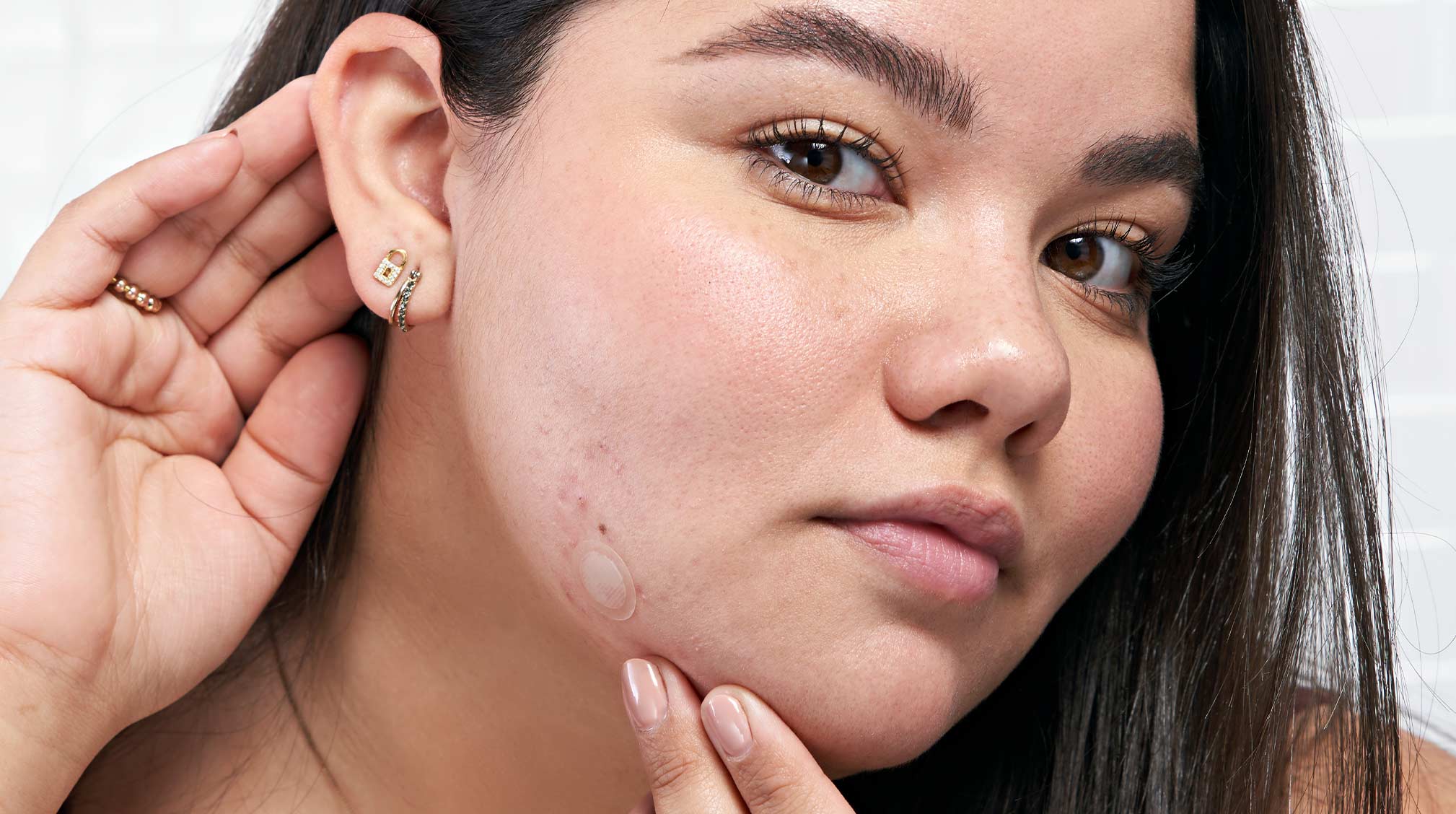
When a pimple is gone (yay!) and the oozy, flaky skin has healed, you often still have to deal with the aftermath: red or dark spots left behind. These frustrating reminders of pimples past will typically fade, but it can take weeks to months for that to happen.
Hyperpigmentation is the term most people would use to describe their post-pimple marks, but there are actually two different types of spots: Post-inflammatory Hyperpigmentation (PIH) and Post-inflammatory Erythema (PIE). Below, we break down the differences between the two, how to tell which type of spot you have and the best ways to treat each one.
PIH vs. PIE
Let’s keep it simple. Pimples cause inflammation, which results in a mark that’s left on your skin after they heal. If the spot is brown or dark, it’s PIH. If it’s pink, red or purplish, it’s PIE. “Simply put, when a lighter-complected person gets an acne bump, it often resolves leaving a red spot,” explains Dr. Adam Mamelak, an Austin-based, board-certified dermatologist. “In darker skin types, the acne resolves leaving a dark spot.”
Dr. Anna Karp, a board-certified dermatologist at The Skin Institute of New York, explains what causes the two different types of post-pimple spots. “Lighter skin tones get something called post-inflammatory erythema, or redness that doesn't go away. This is due to blood vessels dilating and not the same as pigmentation, which is from melanin.”

What if my spot looks both dark and reddish?
That’s a common question because each person’s skin tone is slightly different, which means that post-acne spots are slightly different too. Luckily, there’s an easy test you can do to figure out which type of mark it is. Simply press on your skin where the spot is, and if it momentarily disappears, it’s most likely PIE. If the mark doesn’t disappear, it’s probably PIH.
If you have a medium complexion or skin tone, you may experience both red spots and dark spots on your face, depending on the type of acne you had, the duration of time it was active (all the more reason to tackle early-stage pimples with Micropoint for Blemishes), and whether there was any picking or popping involved.
How to get rid of dark spots from post-inflammatory hyperpigmentation
Hyperpigmentation, or patches of skin that are darker in color than the surrounding skin, is caused by an overproduction of melanin (the brown pigment that produces skin color). This occurs when our skin reacts to inflammation from triggers like acne, sun exposure, eczema, rashes or wounds.
When searching for a hyperpigmentation treatment, you want to look for ingredients that will either impede melanin production or slow down the transfer of pigment:
- Vitamin C helps to inhibit tyrosinase, which is an enzyme that supports the development of melanin. Not only is vitamin C an effective brightener, but it also helps to protect skin against free radicals and damage from UV rays.
-
Tranexamic Acid prompts an anti-inflammatory action that reduces the production of melanin to target discoloration and even out skin tone.
- Niacinamide (Vitamin B3) can help prevent pigment transfer within the skin and boost collagen production, both of which lighten hyperpigmentation.
Calming the redness from post-inflammatory erythema
PIE, on the other hand, does not involve melanin at all. Whether from the inflammation of a pimple itself or the acts of picking and popping, PIE is the result of damaged capillaries under the skin. The most effective in-office treatments for PIE are Intense Pulsed Light and Pulsed Dye Lasers, both of which can reach below the surface of the skin to break down damaged blood vessels. However, many dermatologists also recommend some of the same brighteners that fade hyperpigmentation to help reduce redness from PIE, specifically vitamin C and niacinamide.
RELATED READ: Highlighting Laser Skin Resurfacing

At-home solutions for both PIE and PIH
The key to effectively tackling PIE and PIH is treating spots immediately after a pimple pops. Start with the twice-daily brightening and illuminating serum — Lightning Wand — on clean, dry skin. For extra stubborn spots and marks, add an overnight treatment like Micropoint for Dark Spots.
Both Lightning Wand and Micropoint for Dark Spots help fade the look of dark and red marks with the brightening trio of Vitamin C, Niacinamide and, Tranexamic Acid. Micropoint for Dark Spots goes the extra mile with 173 microneedles that ensure the spot-busting ingredients reach the origin of your discoloration issue.
When a post-pimple dark or red spot is the last thing between you and healthier-looking skin, you can end the blemish saga for good with Lightning Wand and Micropoint for Dark Spots.












.png?v=1663017252122)

